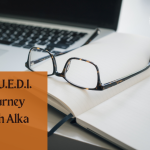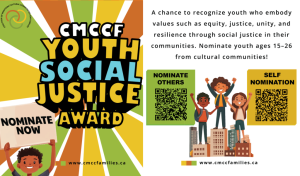
May is celebrated as Asian Heritage Month in Canada.
A warm summer welcome to all our readers and friends…
In 2002, Canada declared the month of May as Asian Heritage Month, highlighting this time of year as a way to learn more about the cultures and achievements of peoples of Asian origin; and to acknowledge their contributions- in fields as varied as the arts to the sciences, sports to business- and indeed to making Canada the diverse country it is today.
Let me share some basic numbers for context: The huge Asian community in Canada is made up of East Asians and South Asians (also referred to as East Indians in some parts of the country), as well as Western, Southeast and Central Asians. Among the major immigrant-sending countries included in these populations are the Philippines, India, China, Iran, Pakistan, Syria, and other countries located in the Middle East. It is also important to bear in mind the following statistics: in 2016, Asian countries accounted for 7 of the top 10 source countries Canada received immigrants from; and according to Statistics Canada projections data, by 2036, individuals born in Asia would represent between 55.7% to 57.9% of all immigrants in Canada.
The power of Storytelling.
Further, it is noteworthy that the thematic focus for Asian Heritage Month in the year 2023 is, `Stories of Determination.’ Perhaps such a focus carries the hidden message that challenges and discrimination have been an integral part of the journey immigrants from various countries and regions in Asia have undertaken in the last several decades? I must also add that it is indeed empowering and gratifying to live in a multicultural country where space is officially created for diverse communities to tell the stories that are important for them; and Asian Heritage Month is one of these opportunities.
I will not reiterate the infamous history from by-gone times, either of the Chinese Head-Tax (1885-1923), a policy put in place to restrict Chinese immigrants coming to Canada; or the shameful shipping (mis)adventures of the Komagata Maru (1914) carrying passengers from India who were denied entry in Canada. Speaking of more current times though, the recent COVID-19 pandemic has once more fanned the flames of anti-Asian racism, hate, and xenophobia, leading to the re-opening of many old wounds from the past.
Anti-Asian hate in COVID-times, and other forms of racism as everyday reality.
Triggered by the pandemic, in 2020, racist attacks against Asians increased, and hate crimes were perpetrated against individuals from certain Asian countries; they were accused of being carriers of the deadly corona virus. These allegations were not only unscientific, irrational, and unjust, but they also confirmed the sinister truth that racism and discrimination in Canada (and in the world) are alive and well. Sadly, racist behaviours, and discriminatory systemic practices are a part of the lived experiences not only of Asian communities in Canada; rather, they are manifest in the everyday realities of the lives of members of other racialized ethnic communities too (as we are aware, these communities of colour are also categorised and named in Canada as visible minorities). It is important then that, as members of cultural communities, people band together in support, solidarity, and strength, and that we look out for each other as allies and partners.
Each person’s `lived experience’ is different…
It so happened that as I was exploring thoughts and ideas for the blog this month, a colleague shared an experience that was one of the `normal’ ones in her everyday life, but her awareness of it when it happened to her still caused her some stress. Her story stood out to me as, in the context of my lived experience, it was a new and unfamiliar one. (As an aside, and that’s the significant aspect of this lived-experience thing- the phrase being used nowadays so much more frequently than ever before, both in a research context, on social media, and more loosely too, in everyday parlance. When we use it, somehow, we assume we understand the exact experience another individual is talking about if, as readers, we also have this thing called `lived experience’; let’s remember though we do not really know each other’s everyday realities as we are all unique beings with specific life experiences and personality traits; and for each person our intersectional place in the world is different-based on where we live, our gender, class, and age; race, ethnicity, and level of education; sexual preference and ability/disability status etc, to name a few elements that make up our identities).
My colleague shared the following experience: As a Muslim woman, wearing a visible marker of their religious identity-the hijab, or head-covering- in a public space, like, the street or in a grocery store, she felt the pressure to `deliberately smile pleasantly,’ to ensure that `she did not appear too threatening’ to those around her. For me, it was clear that the assumptions some people made about her, and the instinctive stereotyping they were coming from, was evidence of assumptive behaviours prevalent in our society.
The spontaneous (and internalised) response on the part of the person being targeted and `otherised’ by such a `gaze’ -the Muslim woman in this case- is to somehow over-compensate by smiling too much, ensuring she conveys an aura of friendliness, not threat, so this may help the onlooker manage their fears better.
Don’t you think this is too much pressure, a heavy burden that must be carried by one already victimised by unnecessary prejudice? Besides, does it not seem unjust that the responsibility to prove oneself to be a trustworthy person rests with an individual who belongs to a cultural or ethnic community- just because of the colour of their skin or their accent; or because they are perceived by others to be a certain kind of person, based on their appearance or their practicing of a certain faith?
That long standing story of job-market integration for foreign trained professionals.
You might say, oh this person is being too sensitive, how do they know exactly what the other person is thinking! So, lets reflect on something more `objective,’ the well-known and highly visible scenario that presents an economic road-block for well qualified immigrants and newcomers who come to Canada. They come to this host country with a dream to access the job market in a way that would help them contribute their talents while fulfilling their professional aspirations, and taking care of their family responsibilities. There is currently a lot of emphasis and media reporting on labor market shortages in multiple sectors-including a dire need in the health-care sector (post COVID), for doctors and for nurses, and for the other allied vacant positions in the field that need filling-with waiting lists of individuals and families without family doctors getting longer as are emergency wait times.
On the other side of the supply chain though, although there is an abundance of professional human resource already in the country, ready and eager to jump in to provide the needed expertise and care, it seems impossible to close these demand and supply gaps. Apart from piecemeal and band aid solutions, systemic barriers continue to pose insurmountable obstacles, and processes like credential recognition and licencing do not get completed in a timely manner. This leads to frustrations for individuals, and losses for employers and the economy, as well as lost revenue for the state. It is both problematic and sad to see that the political will, so needed to move the policy needle on this ongoing structural issue, is absent; and no sustainable solutions are in sight.
A call for ally-ship within diverse cultural communities.
As I pointed to above, there is power in storytelling, both for the story-owner who shares their story, as well as for the listener. Stories are cathartic and can bring healing, and sharing them with each other also helps to create a special relationship based in empathy. Stories are also educational, and a useful resource for raising awareness while creating a space for care. We do need to mark days like the Asian Heritage Month, and similar days significant for other cultural communities in Canada; these are days both for celebration and for remembrance. They are also a time to gather together and to share stories of struggles and triumph, with the objective of imagining a future shaped by shared goals and new possibilities.
Goodbye, till we meet in June, be well….

The views expressed in this blog post are mine, and I take full responsibility for them. We are always wanting to hear from you – please share your thoughts and feedback by completing our contact form here or by emailing hello@cmccfamilies.ca.
To learn more about our Intercultural and Intergenerational Diversity and Inclusion Engagement Project, go to our J.E.D.I. Initiative landing page here.

 Previous Post
Previous Post
